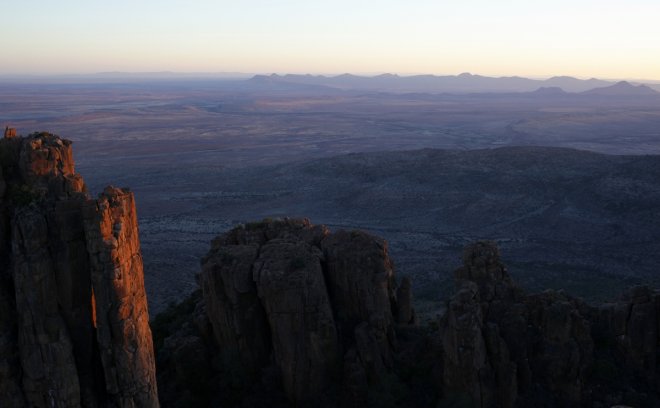
Evidence from the Gondwanides Mountains in Karoo basin of South Africa has proven that climate changes had resulted in the world's largest mass extinction about 250 million years ago. The research led by Dr.Pia Viglietti, a post-doctoral researcher, at the Evolutionary Studies Institute (ESI) at Wits University has found the proofs for one of the deadliest catastrophes in the history.
The Gondwanides Mountains ranged from the Southern continents of South America, Antarctica, South Africa and Australia in the supercontinent Gondwana millions of years ago. The splitting of the supercontinent had resulted in the formation of the continents that are visible today.
Viglietti stated in a press release published in 'eurekalert', "We've established that climatic changes related to the devastating end of the Permian mass extinction event about 250 Million years ago were beginning earlier than previously identified."
The Permian-Triassic extinction had resulted in the wiping off of 96 percent of all marine species and 70 percent of terrestrial species. The Gondwanides Mountains and the Karoo valley had supported terrestrial lives for more than 100 million years since the period of Gondwana. The tectonic events in the Gondwanides have resulted in an accumulation of the fossil remains in the Karoo valley.
According to the press release, Viglietti stated, "The Karoo Basin takes up a huge portion of South Africa and most of us who drive through it do not think much of it. But if you know what you're looking for, the Karoo represents a wealth of knowledge about the story of life on Earth." He said that the Gondwanides not only influenced how and where rivers flowed (depositing sediment) but also had a significant effect on the climate. It had thus influenced the ancient fauna of the Karoo Basin.
The sediments in the valley have the best possible evidence to prove that climatic changes affected the mass extinction. The research paper published in the Scientific Reports states that the extinction of the vertebrate animals in the region had started much earlier than previously thought.
Large mountain ranges had created huge pressures on Earth's crust, which created depressions. These depressions had resulted in the accumulation of the fossilized rocks in the form of sedimentation.
Viglietti added that "Within the last million years before this major biotic crisis, the animals had already started to react. I interpret this faunal change as resulting from climatic effects relating to the end-Permian mass extinction event-only occurring much earlier than previously identified."
Scientists predicted that the earth is currently experiencing sixth mass extinction in the past half-billion years. They suggest that this is the worst extinction aftermath of the event, which resulted in the extinction of dinosaurs about 65 million years ago.
Scientists have estimated that the extinction is occurring at a speed of about 1,000 to 10,000 times than normal, with around 5 species becoming extinct per year. They have predicted the extinction of about 30 to 50 percent of the known species by the mid-century.
Human activities are the major cause of the impending extinction of 99 per cent of currently threatened species. Loss of habitat, the introduction of the exotic species and global warming are the major human contributions to the extinction. Extinction of some species can disrupt the balance causing a greater damaging.









